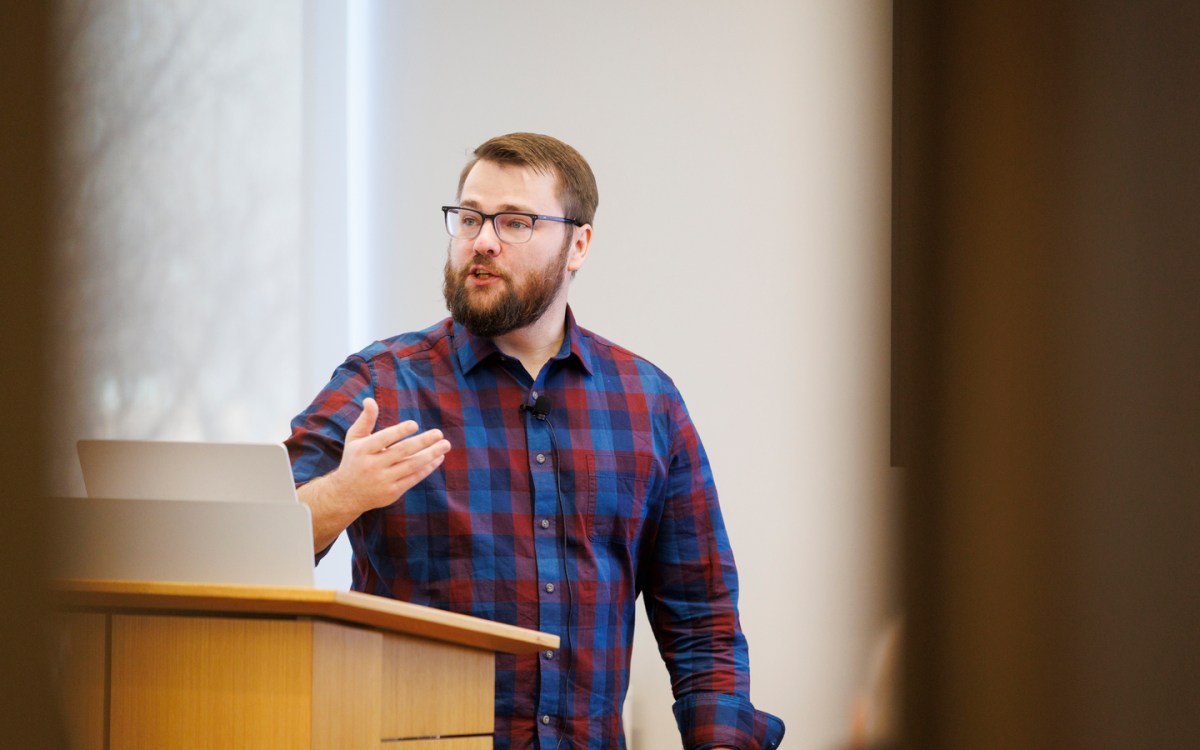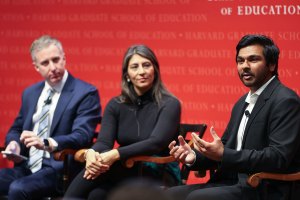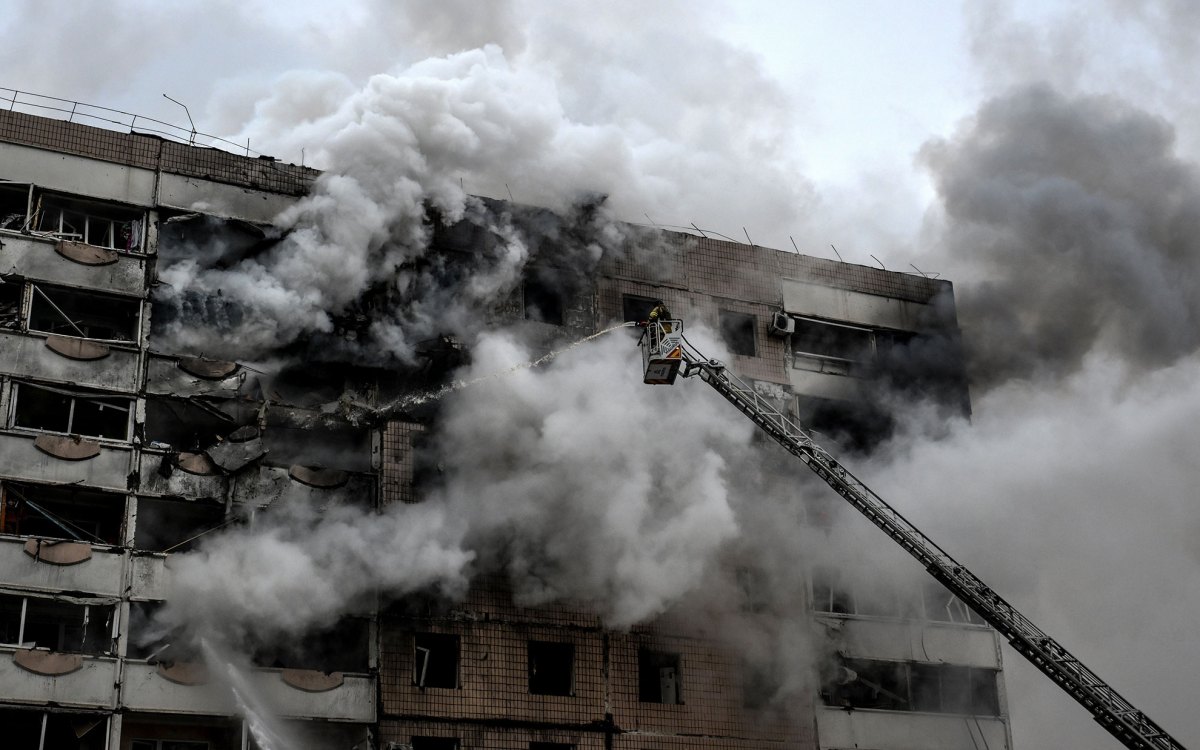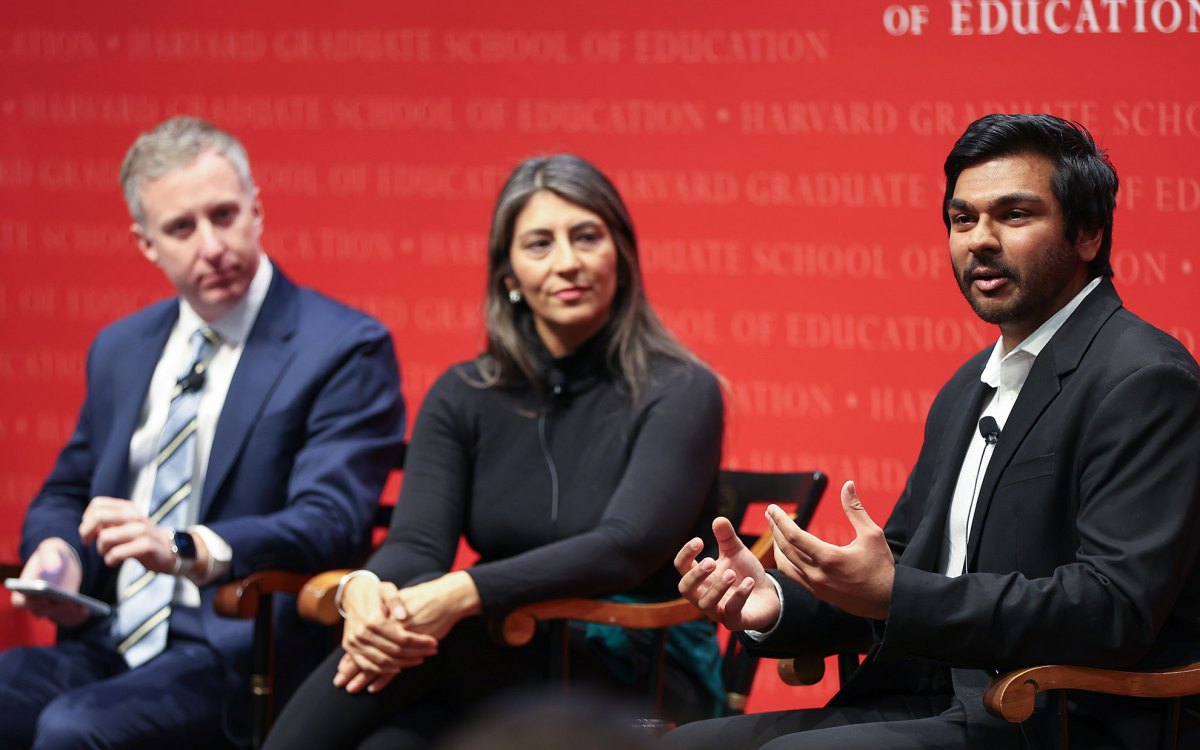History of Chichén Itzá written in DNA
Research using new method upends narrative on ritual sacrifices, yields discovery on resistance built to colonial-era epidemics

Photo by Johannes Krause
La historia de Chichén Itzá escrita en el ADN
Un nuevo método de investigación pone en entredicho la interpretación de los sacrificios rituales y pone al descubierto la resistencia a las epidemias de la época colonial.
Durante más de 100 años, la antigua ciudad maya de Chichén Itzá ha sido fuente de fascinación arqueológica.
La arqueóloga biomolecular Christina Warinner destacó que los restos humanos descubiertos a principios del siglo XX inspiraron “relatos escabrosos” de sacrificios rituales de mujeres vírgenes. Hubo que esperar hasta principios del siglo XXI para que los investigadores reunieran suficiente evidencia, basada en análisis de restos óseos, que pusiera en dudaesta historia.
Ahora Warinner, catedrático adjunto de Ciencias Sociales John L. Loeb, y un equipo interdisciplinario internacional de científicos le han dado un vuelco a esa historia. Su investigación de vanguardia, publicada esta semana en Nature, revela que los niños, especialmente los gemelos, eran el centro de los sacrificios en la legendaria ciudad-estado. La investigación también ha arrojado luz sobre los lazos familiares y la dieta de estos niños, las epidemias de la época colonial y el paradero actual de los descendientes de Chichén Itzá.
“Este es el primer estudio que utiliza ADN antiguo, isótopos y bioarqueología para trazar una mejor imagen de lo que estaba sucediendo allí”, dijo el autor principal Rodrigo Barquera, inmunogenetista e investigador postdoctoral en el Instituto Max Planck de Antropología Evolutiva en Alemania, donde Warinner es también investigadora.
Chichén Itzá se hizo prominente alrededor del año 800 d.C., y permaneció poderosa y densamente habitada durante más de dos siglos, y sirvió como destino de peregrinaciones durante y después del período colonial español.
La arquitectura de la capital regional refleja varios estilos y evolucionó a medida que los habitantes de Chichén Itzá forjaban alianzas políticas, culturales y religiosas tanto en las cercanías como en las lejanías. Por ejemplo, El Castillo, el templo de 75 pies de altura del yacimiento, se construyó siguiendo el estilo de los toltecas, que gobernaban una zona situada a cientos de kilómetros, cerca de la actual Ciudad de México. Estas conexiones despertaron la curiosidad de Barquera sobre la procedencia de las personas enterradas a escasos metros del Cenote Sagrado, un hundimiento acuático donde se realizaban ofrendas rituales de oro, jade y vidas humanas.
“Queríamos conocer mejor a las personas que vivieron y murieron allí”, afirma Barquera. “¿Eran de la región maya? ¿De algún otro lugar de Mesoamérica? ¿O incluso de más lejos?”
Para averiguarlo, el equipo de investigación se embarcó en un análisis genético en profundidad de niños enterrados ritualmente en un chultún, o cisterna artificial, no lejos del Cenote Sagrado. Warinner señaló que los chultunes y las cuevas han sido representados durante mucho tiempo en el arte y los mitos mayas como portales al submundo. “Hay un patrón que se repite en estas estructuras subterráneas: el agua y los enterramientos de niños”, dijo Warinner.
El clima cálido y húmedo de la península de Yucatán había sido hasta ahora un factor que complicaba la investigación del ADN antiguo. Los recientes avances tecnológicos, así como la relativa estabilidad de la temperatura del chultún, que ayudó a preservar los restos óseos de los infantes, permitieron el análisis de Barquera, que decidió centrarse en el hueso de la parte petrosa del oído interno.
“Es el mejor sitio para encontrar ADN”, explicó, y añadió que centrarse en el lado izquierdo permitió a los investigadores evitar duplicados. “Tuvimos suerte de que, de los más de 100 individuos que se cree que fueron enterrados allí, pudimos recoger el hueso petroso izquierdo de 64 de ellos”.
Sacrificados en torno a los 3 o 4 años de edad, estos niños fueron enterrados en su mayoría entre los años 800 y 1.050 d.C., que fue la época de apogeo político de Chichén Itzá. Todos procedían de poblaciones mayas locales. Además, todos eran varones, con dos pares de gemelos idénticos en la muestra.
Otros análisis revelaron que al menos una cuarta parte de los varones estaban estrechamente emparentados de alguna otra manera. Pero el ADN no era lo único que tenían en común. La investigación de isótopos estables, o sea el uso de la química de huesos y dientes para investigar dietas antiguas, mostró que su alimentación era extremadamente similar, como si vivieran en la misma casa. “Esto era cierto no solo en el caso de los gemelos, sino también en el de cada grupo de individuos emparentados”, señaló Barquera.
“Parecían haber sido seleccionados por parejas”, añadió Warinner, que también señaló la importancia de los gemelos en textos sagrados mayas como el Popol Vuh. “Sugiere una actividad ritual muy específica”.
Los investigadores también estudiaron a las personas que viven actualmente en Tixcacaltuyub, situada a una hora en auto del sitio arqueológico. Los residentes de esta comunidad maya local ya trabajaban en diversas iniciativas con investigadores de la Universidad Autónoma de Yucatán. Los científicos esperaban comparar el ADN de la población con el de los antiguos niños.
La colaboración con académicos locales resultó vital, según Barquera. Estos profesionales de la salud y expertos en antropología de Yucatán le ayudaron a viajar al pueblo y le explicaron lo que esperaba conseguir el estudio del ADN antiguo. También fueron útiles las copias de “Aventuras en la ciencia arqueológica”, un libro para colorear que Warinner creó con colegas del Instituto Max Planck, ahora traducido al maya yucateco y al español.
“Los libros fueron pensados para niños, pero sirven para todos”, relató Barquera. “Muestran lo que hacemos de una manera accesible”.
Las muestras genéticas revelaron que los habitantes de Tixcacaltuyub son, de hecho, “parientes vivos cercanos de las personas enterradas en Chichén Itzá”, explicó Barquera. La comunidad estaba encantada con estos hallazgos, añadió, dada la prevalencia del racismo contra las poblaciones indígenas en México en la actualidad. Ahora pueden reivindicar sus vínculos ancestrales con las personas que construyeron la gran ciudad de Chichén Itzá.
“Hemos visto a investigadores entrar en comunidades o yacimientos arqueológicos en el pasado para tomar muestras o datos para sus trabajos sin dejar nada a cambio”, dijo Barquera, que creció en México y trabajó en varias clínicas y laboratorios de inmunología, y en la Escuela Nacional de Antropología e Historia de Ciudad de México antes de hacer su doctorado en Europa. “Lo que queríamos era dejar algo en compensación a la comunidad”.
El último descubrimiento del estudio se refiere al legado genético de las epidemias de la época colonial, que causaron estragos devastadores entre los mayas y otros pueblos indígenas. La historia comienza en 2006 con la tesis doctoral de Warinner sobre Teposcolula-Yucundaa, un cementerio de la región mexicana de Oaxaca asociado al brote en 1545 de una misteriosa enfermedad que los aztecas denominaron cocoliztli, o pestilencia. Se calcula que la infección mató entre 5 y 15 millones de personas, es decir, casi el 80 por ciento de la población indígena de México.
“Cambió radicalmente la población de México”, afirma Warinner. “Pero nadie sabía lo que era”.
Warinner regresó en 2018 para un estudio de ADN antiguo que identificó una forma de Salmonella enterica en individuos enterrados en el cementerio. “Hoy en día es una cepa muy rara”, afirma Warinner. “Pero ahora sabemos que estaba bastante extendida en Europa en la época del colonialismo y que probablemente se introdujo durante la conquista española”.
Por su parte, Barquera seguía trabajando en Ciudad de México a principios de la década de 2000 cuando empezó a notar un alelo recurrente, o variante genética derivada de una mutación, mientras realizaba pruebas a donantes y pacientes antes del trasplante de órganos. Recuerda que planteó el asunto a su supervisor.
“Le dije: ‘¡Esto es raro! ¿Cómo puede ser que en todo México veamos este alelo con una frecuencia tan alta? Sabíamos que tenía que venir de algún sitio. Pensamos que tal vez tenía que ver con la resistencia a algo. Pero entonces nunca llegamos a una conclusión, porque no teníamos las herramientas analíticas para probar nada”, dijo Barquera.
En el estudio de Chichén Itzá, el equipo de investigación identificó un cambio en el mismo alelo que Barquera señaló años antes. Hoy en día, dijo, la variante genética es “una de las más prominentes, si no la más prominente, en México y América Central”, pero su prevalencia resultó ser baja en los mayas de Chichén Itzá.
Análisis posteriores demostraron que la variante protegía contra la Salmonella, que Warinner y sus colegas habían relacionado con las epidemias del México del siglo XVI. “Aquí es donde las cosas realmente encajan”, dijo Warinner.
Se sabe que cocoliztli reapareció en 1576, matando a otros 2 millones de personas. “La tasa de mortalidad fue tan alta”, dijo Warinner, “que los científicos han especulado durante mucho tiempo sobre si cambió los perfiles inmunológicos de los pueblos indígenas de las Américas”.
Y ahora, dijo Warinner, el estudio de los individuos enterrados en Chichén Itzá ha revelado la respuesta inmunológica a la mortal propagación de la bacteria por el México colonial.
Después de todos estos años, sigue escrito en el ADN de la nación.
For more than 100 years, the ancient Maya city of Chichén Itzá has been a source of archaeological fascination.
Human remains discovered early in the 20th century inspired what biomolecular archaeologist Christina Warinner called “lurid accounts” of ritual sacrifices of female virgins. Not until the early 21st century did researchers piece together enough skeletal evidence to cast doubt on the narrative.
Chichén Itzá rose to prominence around 800 A.D., remaining powerful and populous for more than two centuries and serving as a destination for pilgrimages through and after the Spanish colonial period.
Now Warinner, the John L. Loeb Associate Professor of the Social Sciences, and an international team of genetic scientists have turned that story on its head. Their state-of-the-art research, published this week in Nature, reveals that boys — especially twins — were the focus of sacrifices in the legendary city-state. The investigation also yielded broader insights into the victims’ familial ties and diets, colonial-era epidemics, and the whereabouts of Chichén Itzá’s descendants today.
“This is the first study that uses ancient DNA, isotopes, and bioarchaeology to draw a better picture of what was going on there,” said lead author Rodrigo Barquera, an immunogeneticist and postdoctoral researcher at the Max Planck Institutes for Evolutionary Anthropology in Germany, where Warinner is also a group leader.
Chichén Itzá rose to prominence around 800 A.D., remaining powerful and populous for more than two centuries and serving as a destination for pilgrimages through and after the Spanish colonial period.
The regional capital’s architecture reflects a number of styles and evolved as Chichén Itzáns built political, cultural, and religious alliances near and far. For instance, El Castillo, the site’s 75-foot temple, was constructed in the style of the Toltecs, who ruled an area hundreds of miles away near present-day Mexico City. Those connections piqued Barquera’s curiosity about the provenance of individuals put to rest in or near the Sacred Cenote, a watery sinkhole where ritual offerings of gold, jade, and human lives were made.
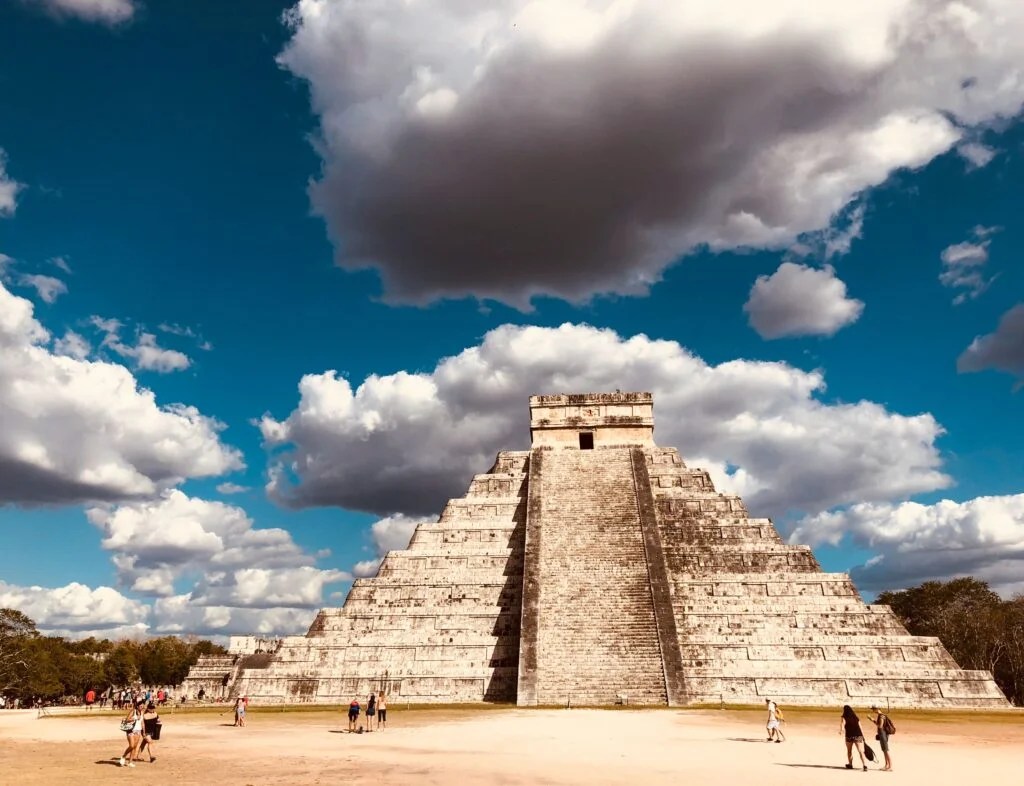
El Castillo.
Photo by Johannes Krause
“We really wanted a better picture of the people who lived and died there,” Barquera said. “Were they from the Maya region? Somewhere else in Mesoamerica? Or even farther away?”
To find out, the research team embarked upon in-depth genetic analysis of children ritually buried in a chultún, or man-made cistern, not far from the Sacred Cenote. Warinner, who is also the Sally Starling Seaver Associate Professor at Harvard Radcliffe Institute, noted that chultúns and caves have long been depicted in ancient Maya art and myths as portals to the underworld. “There’s a repeating pattern between these subterranean structures, water, and child burials,” she said.
The Yucatan Peninsula’s hot, humid weather has been a complicating factor in ancient DNA research until now. Recent technological advances as well as the chultún’s relatively temperature-stable setting, which helped preserve the victims’ skeletons, enabled Barquera’s analysis. He chose to focus on bone from the petrous portion of the inner ear.
“It’s the best site to find DNA,” he explained, adding that focusing on the left side enabled researchers to avoid duplicates. “We were lucky that out of the more than 100 individuals thought to have been buried there, we were able to collect the left petrous bone for 64 of them.”
Killed around the ages of 3 or 4, these children were mostly interred between the years 800 and 1,050 A.D., which was the era of Chichén Itzá’s political apex. All originated from local Maya populations. They also all proved to be male, with two sets of identical twins in the sample.
Further analysis revealed that at least a quarter of the boys were closely related otherwise. But DNA wasn’t all they had in common. Stable isotope research — or using the chemistry of bones and teeth to investigate ancient foods — showed their diets were extremely similar, as if they lived in the same household. “This was true not only for the twins but for each set of related individuals,” Barquera noted.
“They seemed to have been selected in pairs,” added Warinner, who also pointed to the importance of twins in Maya sacred texts like the Popol Vuh. “It suggests a very specific ritual activity.”
The researchers also studied people living today in Tixcacaltuyub, located about an hour by car from the ruins. Residents of this local Maya community were already working on various initiatives with researchers from the Autonomous University of Yucatán. Scientists hoped to compare the population’s DNA with that of the ancient children.
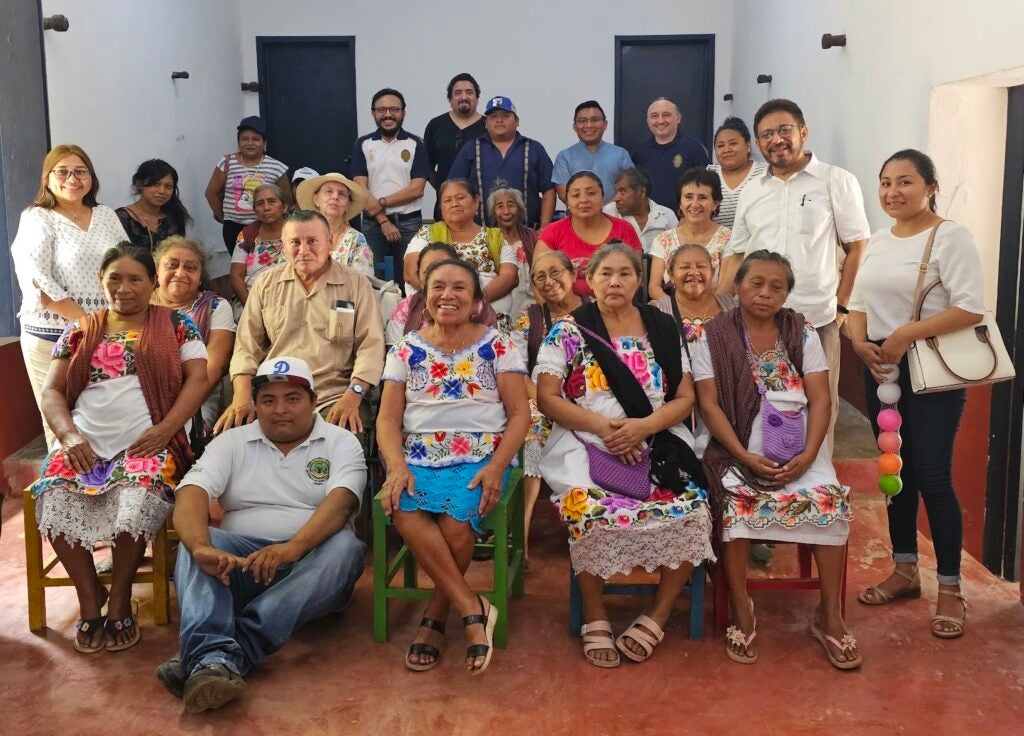
Tixcacaltuyub community members.
Photo by Pilar Márquez Vega
Partnering with local academics proved vital, according to Barquera. These Yucatán-based healthcare professionals and anthropology experts helped him travel to the town and explained what the ancient DNA study hoped to accomplish. Also helpful were copies of “Adventures in Archaeological Science,” a coloring book Warinner created with colleagues at the Max Planck Institute, now translated into Yucatec Maya as well as Spanish.
The community was thrilled by these findings, he added, given the prevalence of racism against Indigenous populations in Mexico today. Now they can claim ancestral ties to the people who built the great city of Chichén Itzá.
“The books were intended for kids, but they work for everyone,” Barquera offered. “They show what we do in an accessible way.”
Genetic sampling revealed that Tixcacaltuyub residents are, in fact, “close living relatives to the people buried at Chichén Itzá,” Barquera explained. The community was thrilled by these findings, he added, given the prevalence of racism against Indigenous populations in Mexico today. Now they can claim ancestral ties to the people who built the great city of Chichén Itzá.
“We have seen researchers go into communities or archaeological sites in the past to take samples or data for their papers without returning anything,” said Barquera, who grew up in Mexico and worked in various Mexico City clinics and immunology labs before pursuing his Ph.D. in Europe. “What we wanted to do was give back.”
The study’s final discovery concerns the genetic legacies of colonial-era epidemics, which exacted a devastating toll on the Maya and other Indigenous peoples. The story begins in 2006 with Warinner’s Ph.D. dissertation research on Teposcolula-Yucundaa, a cemetery in Mexico’s Oaxaca region associated with the 1545 outbreak of a mysterious illness the Aztecs termed cocoliztli, or pestilence. The infection killed an estimated 5 million to 15 million, or up to 80 percent of Mexico’s Indigenous population.
“It fundamentally changed the population of Mexico,” Warinner said. “But nobody knew what it was.”
Warinner returned in 2018 for an ancient DNA study that identified a form of Salmonella enterica in individuals buried at the cemetery. “Today it’s a very rare strain,” Warinner said. “But we now know it was quite widespread in Europe at the time of colonialism and was likely introduced during the Spanish conquest.”
For his part, Barquera was still working in Mexico City in the early 2000s when he started noticing a recurring allele, or genetic variant arising from a mutation, while conducting tests on donors and patients prior to organ transplantation. He remembers bringing the matter to his supervisor.
“I told him, ‘This is weird! How can it be that all over Mexico we see this allele in such high frequency?’ We knew it had to come from somewhere. We thought maybe it had to do with resistance to something. But back then, we never came to a conclusion, because we didn’t have the analytical tools to prove anything.”
In the Chichén Itzá study, the research team identified a shift in the very allele Barquera flagged years before. Today, he said, the genetic variant is “one of the most prominent — if not the most prominent — in Mexico and Central America,” but its prevalence proved low in the Maya of Chichén Itzá.
Subsequent analyses showed the variant was protective against Salmonella, which Warinner and colleagues had linked to the epidemics of 16th-century Mexico. “This is where things really come together,” Warinner said.
Cocoliztli is known to have reappeared in 1576, killing another 2 million people. “The mortality rate was so high,” Warinner said, “scientists have long speculated as to whether it shifted the immune profiles of Indigenous peoples of the Americas.”
And now, she said, studying individuals buried at Chichén Itzá has revealed the immunological response to the bacteria’s deadly spread across colonial Mexico.
After all these years, it remains written in the nation’s DNA.
